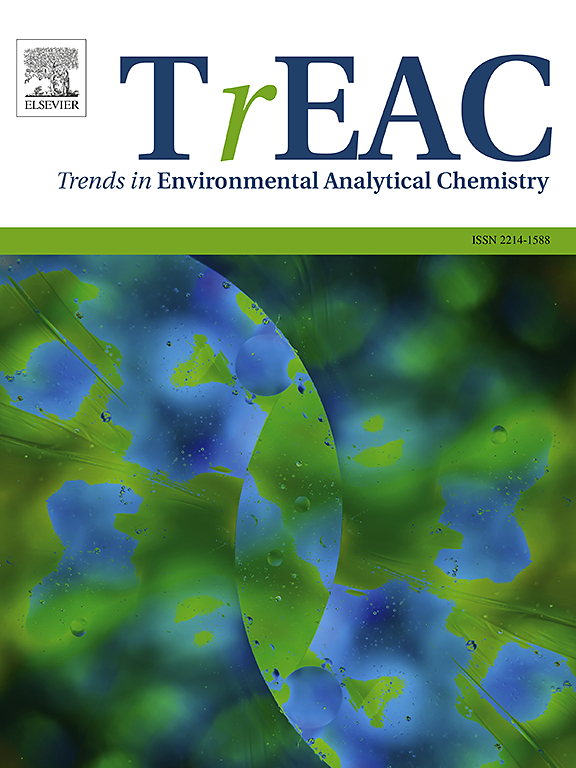3d打印传感平台及其在环境监测中的可行性
IF 13.4
2区 化学
Q1 CHEMISTRY, ANALYTICAL
引用次数: 0
摘要
在简要介绍了环境监测和3d打印技术的最新进展之后,本文对过去五年来3d打印制造的最相关的电化学传感器进行了总结报告。这些传感器主要应用于环境监测、食品工业、医疗保健和制药工业,对其印刷设计、电极修饰的选择和分析性能进行了比较和讨论。此外,为了更好地了解用于环境监测的电化学传感器的成就和局限性,本文主要以水污染检测和质量监测为重点进行了更详细的分析。最后,为了更好地利用3d打印,还讨论了可能的改进和进一步将该技术应用于环境监测部分的未来。本文章由计算机程序翻译,如有差异,请以英文原文为准。
3D-printed sensing platforms and their feasibility for environmental monitoring
After a brief introduction of the state of the art in environmental monitoring and 3D-printing technology, this review presents a general summary report about the most relevant electrochemical sensors fabricated by 3D-printing during the past five years. Being mainly applied in environmental monitoring, food industry and healthcare and pharmaceutical industry, the printing design, choice of electrode modification and analytical performance of those sensors are compared and discussed. Furthermore, to gain a better understanding about the achievements and limitations of the electrochemical sensors designed for environmental monitoring, a more detailed analysis is carried out by mainly focusing on water pollution detection and quality monitoring. Finally, to take better advantage of 3D-printing, the possible improvements and the future of further applying this technique into the environmental monitoring section is also discussed.
求助全文
通过发布文献求助,成功后即可免费获取论文全文。
去求助
来源期刊

Trends in Environmental Analytical Chemistry
Chemistry-Analytical Chemistry
CiteScore
21.20
自引率
2.70%
发文量
34
审稿时长
44 days
期刊介绍:
Trends in Environmental Analytical Chemistry is an authoritative journal that focuses on the dynamic field of environmental analytical chemistry. It aims to deliver concise yet insightful overviews of the latest advancements in this field. By acquiring high-quality chemical data and effectively interpreting it, we can deepen our understanding of the environment. TrEAC is committed to keeping up with the fast-paced nature of environmental analytical chemistry by providing timely coverage of innovative analytical methods used in studying environmentally relevant substances and addressing related issues.
 求助内容:
求助内容: 应助结果提醒方式:
应助结果提醒方式:


